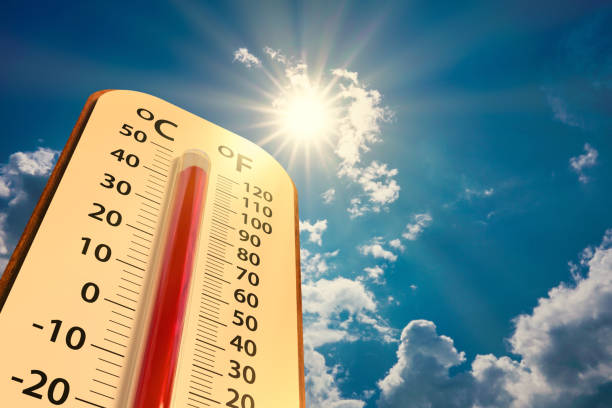Heat Action Day – Extreme heat

JUNE 2 HEAT DAY. Today, every region of the world was affected, and the consequences for people’s physical and mental health were significant. Tragically many heat-related deaths were preventable. The Red Cross was mobilizing communities around a shared goal: to help people ‘Beat the Heat’ everywhere through practical, life-saving steps to prevent heat exhaustion and heat stroke.
The rising global threat of heatwaves was a major priority, especially for under-served urban communities, where risks were amplified by overcrowding, poor infrastructure, and lack of access to cooling. Red Cross and Red Crescent National Societies were responding with a wide range of initiatives, including in Greece, Spain, Kyrgyzstan, Bangladesh and here in Geneva. On 2 June, the Red Cross Red Crescent Climate Centre would release a new report, elevating the voices of those hardest hit by the effects of heat. It would also include the latest figures on the growing health toll of extreme heat, and how this could be prevented. Mr. Della Longa said solutions existed. From Heat Action Plans and early warning systems to urban greening, passive cooling, and anticipatory actions, these approaches saved lives. The IFRC would continue to work side by side with communities around the world to help them ‘beat the heat’.
Clare Nullis, for the World Meteorological Organization (WMO), said WMO had been active on the topic of extreme heat in the World Health Assembly, and now had a new joint plan on extreme heat funded by the Rockerfeller Foundation. It was estimated that extreme heat killed half a million people per year, and often these deaths were not recorded. Advanced heat warning systems in just 57 countries could save nearly 100,000 lives per year. Less than one quarter of governments used climate and meteorological data in their health planning, and this had been a key focus of the World Health Assembly. There was an urgent need to work together to align more closely, which would be a focus of the joint plan.
Climate- and risk-related conferences
Five of the past six years had seen the most rapid glacier retreat on record. The World Glacier Monitoring Service estimated that glaciers had lost a total of more than 9,000 billion tons since records began in 1975, which was equivalent to a huge ice block of the size of Germany with a thickness of 25 meters. Together with ice sheets, glaciers stored about 70 percent of the global freshwater resources, and glaciers depletion threatened these supplies.
In the short-term glacier melt increased natural hazards like floods, which had been recently seen here in Switzerland where a major glacier collapse triggered a gigantic avalanche which buried much of the small village of Blatten in the southern Alps. This highlighted the importance of early warning action and how these could be used to save people’s lives. In 2022-2023 in Switzerland, glaciers had lost around 10 percent of their remaining volume Other regions including Central Asia, where the Van Yakh Glacier, the largest in the region, had lost approximately 16 cubic kilometers in volume and 45 square kilometers in area in recent decades; the equivalent of 6.4 million Olympic swimming pools and 6,000 football fields worth of ice. There were five urgent and practical actions to be taken: tackle global warming; strengthen monitoring systems; unlock the power of partnerships; turn science into policy; and invest in people.
UN Ocean Conference in Nice
With over 80 percent of trade being carried out by sea, the ocean was vital to global connectivity and climate regulation. The ocean economy was experiencing unprecedented growth, expanding at a rate of 250 per cent per decade. In 2023, it reached a record $2.2 trillion in combined trade of ocean-based goods and services. However, it faced mounting pressures from pollution, climate change, biodiversity loss, damaged marine ecosystems, and fragmented governance. The ocean was heating at an alarming rate, acidifying and losing oxygen. More than a third of global fish stocks were below sustainability levels and an estimated 8 to 10 million metric tons of plastic entered the ocean annually.
UNCTAD was advocating for urgent, practical solutions, including: the upscale of blue finance via innovative mechanisms; the reform of environmentally harmful fisheries subsidies; and the advancement of sustainable marine-based innovations to support vulnerable countries. Its recent Ocean Forum put forward 15 action-oriented recommendations to strengthen ocean governance and align trade, investment and sustainability objectives. Genetic resources in the high seas were too important to remain under-regulated and inadequately managed. The timely entry into force of the UN Agreement on Marine Biodiversity Beyond National Jurisdiction (BBNJ) was essential to ensure their fair and sustainable use. Ms. Huissoud clarified the Ocean’s Conference was being organized by the Governments of France and Costa Rica.










